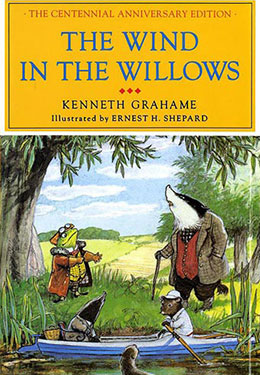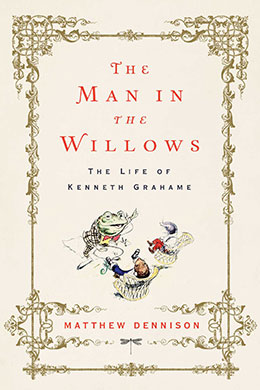Readers of my blog have no doubt noted my abiding affection for The Wind in the Willows by Kenneth Graham. I have no idea when I first read it—10 years old, 12?—but I’ve always loved it. Still do. So, it was a received pleasure when my sister sent me The Man in the Willows: the Life of Kenneth Grahame, by Matthew Dennison. Reading it proved to be a shock.
Grahame’s childhood was miserable, with his mother dying when he was young, and his alcoholic father abandoning him and his siblings, so unsympathetic relations raised him. Not allowed to go to university, he was put to work as a clerk in London’s Bank of England at the age of sixteen and remained there, rising to top administrative posts after many years.
Though part of London’s literary community, he was never fully committed to writing, being more of an essayist than anything else. The Wind in the Willows was his only novel. Receiving, at first, negative reviews, the book was only gradually perceived and acknowledged as a classic children’s book.
Grahame grew up to be social but shy and took refuge in a kind of infantile pantheism, a lover of nature, and toys, if not people. Indeed, Wind in the Willows can be read as a deeply conservative rejection of the modern world. (I hope you don’t read it that way.)
Curiously unemotional, a‑sexual, Grahame had a mutually unhappy marriage, and both parents neglected their only child—who had a miserable and perhaps abusive life—so much so that he committed suicide before achieving manhood.
And yet … and yet. There is that wonderful book. Can one separate the book from the person who wrote it?
I want to. But it troubles me.
Even as I was reading the biography my wife and I saw the movie, Tar. Though wonderfully acted, it was one of those movies that made us feel compelled to read the reviews to fully understand it. Here again was a troubling story, depicting a (fictional) fine artist, who, to say the least, is a failure as a person. Again, the question is: Can we separate the great art from the flawed artist?
Literature has any number of these troubling contradictions. Consider Edgar Allan Poe. Think of Roald Dahl. Once, a highly successful children’s book author confided to me, “I really don’t like children.”
Do I have a moral to these musings? Perhaps the best art (whatever form) is simple even as it is complex. Perhaps the best artists are full of contradictions. Perhaps contradictions are what art is all about. Maybe contradictions are what life is about.
Maybe …


